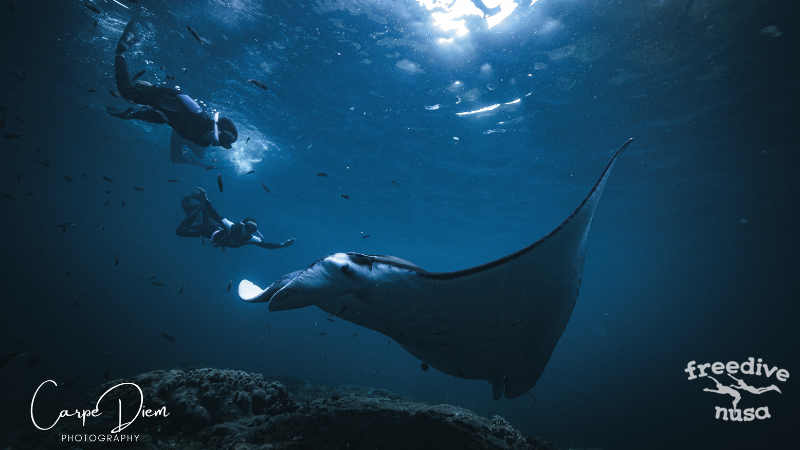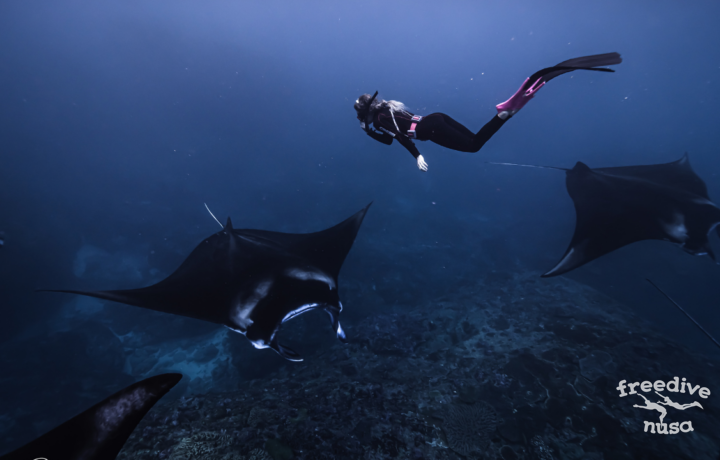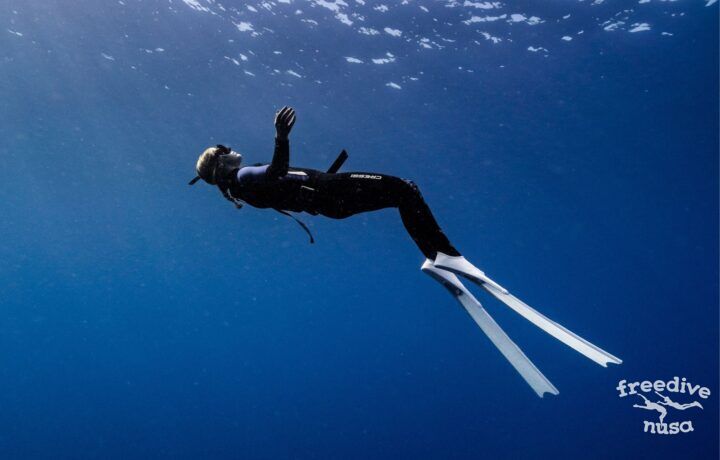The island of Nusa Penida is one of the few places in the world where you can observe a population of manta rays. You can even try diving, freediving, or snorkeling with manta rays! And to be able to appreciate the experience even more, let’s learn a little bit more about these mysterious creatures: how big is the manta ray? Can manta rays sting? What is manta rays’ skeleton made of? and much more:
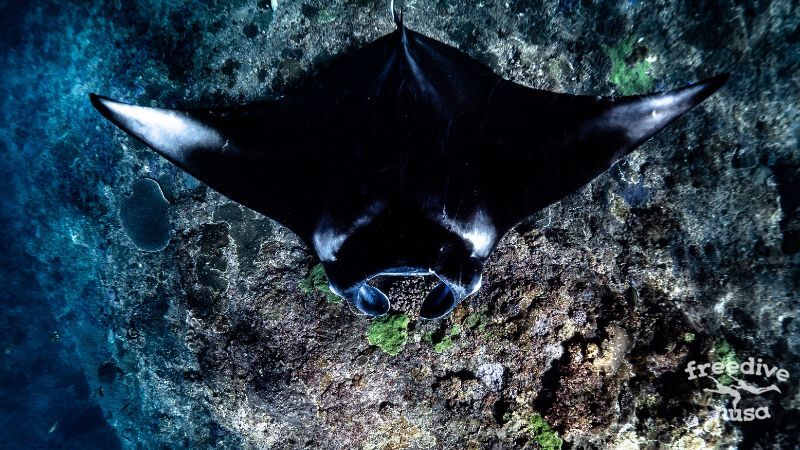
1. They are the largest rays on the Earth, with wingspans up to 7 m
Large and flat, these fish are named for their unique appearance, “manta” meaning “blanket” in Spanish. They are found worldwide in tropical, subtropical, and temperate waters, migrating following seasonal blooms of food. They aggregate around coastal seas, where they visit cleaning and feeding areas.
2. They filter-feed on zooplankton
As they swim with their forward-facing mouth open, plankton-rich water flows in. With feather-like structures called gill rakers, they trap the plankton, redirecting the tiny food back to the esophagus. Then they close their mouth squeezing out the remaining water as pressure increases through the gill slits. They have two cephalic fins that drive plankton to their mouth. Their eyes are on the sides of the cephalic fins.
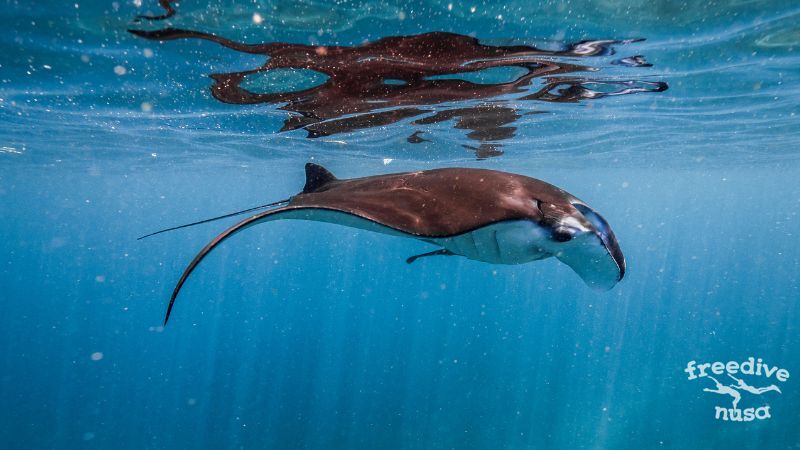
3. They are harmless
Despite their size, they are completely harmless to humans. Tails help them to balance swimming, but unlike stingrays, they don’t have a defense function anymore: they don’t even have a sting.
4. Their skeleton is made of cartilage
They are very close relatives of sharks, and they both have skeletons composed of cartilage. Except for rays and sharks, the rest of the fish have skeletons composed of bone tissue. Cartilage weights less, which makes them lighter.
5. They must keep swimming!
Mantas’ gills are full of blood vessels to absorb the oxygen from the water. Unlike bony fish, they don’t have a coverage called operculum for their gill slits that opens and closes to drop and increase pressure, creating a water flow. For this reason, they must keep swimming to keep oxygenated water passing over their gills. They can’t stop!
6. Among all fish, manta rays have the largest brain-to-size ratio
They are playful and curious. They can create mental maps of the environment through smell and visual cues, which indicates highly developed long-term memory, and they can even recognize themselves in a mirror! When exposed to a mirror, they show repetitive behaviors, like very frequent cephalic fin movements as well as several unusual behaviors such as exposing and observing their underside in the mirror or bubble blowing.

7. They use intelligent strategies to feed
These strategies can often be complex, requiring coordination among multiple individuals to enhance efficiency. For example, they swim in groups, in line head to tail, positioning slightly above or below the manta in front creating a line. And if plankton is very dense, they may begin to loop forming a circle. This movement creates a great current that pulls plankton towards them. Up to 150 rays have been seen together creating a spiraling mass for as long as 30 minutes. This is known as cyclone feeding.
8. They give birth every two years, usually to one child
Manta rays can live for 50 years, with females reaching sexual maturity around 8-10 years old. This is late compared to other fish. Gestation is known to last around a year. They live for a long time and are slow to reproduce, which means overfishing is a big threat for them. They don’t have enough time to recover their population.
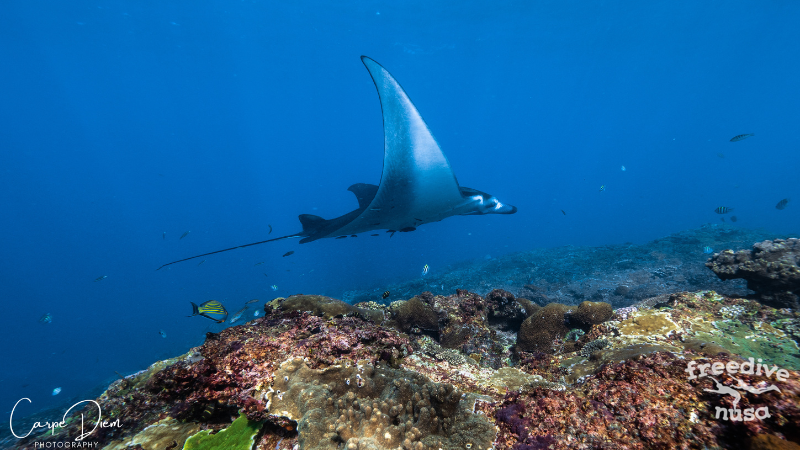
9. They visit cleaning stations to get clean and hang out
A cleaning station is a location where aquatic individuals (clients) like turtles, sharks, mantas, and other fish congregate to be cleaned by smaller organisms (cleaners) like cleaner fish and cleaner shrimp. The cleaning process includes removal of dead tissue and parasites from the skin, mouth, gills, and so on. As they have no hands, when they have a parasite affixed, they can’t easily get rid of it. Thus, they have co-evolved this fascinating partnership. It is beneficial for both the cleaners, who get food, and the clients, who get rid of the parasites. Cleaning stations also act as focal gathering points for social behavior such courtship as and mating.
10. They are listed as vulnerable to extinction by the International Union for Conservation of Nature
Thanks to their size, they don’t suffer much from predators. The most direct threat to their survival is overfishing. They are harvested for their gill rakers used in Chinese medicine and are also caught as incidental by-catch. Pollution and ingestion of microplastics are other big threats for them. They are filter feeders and are more exposed to this risk: filtering indigestible plastic particles can block nutrient absorption and cause damage to the intestinal tract. Entanglement in fishing nets or other marine debris and subsequent suffocation is also common. Other threats include habitat degradation and climate change.
We still have a lot learn about these fascinating and intelligent creatures. And to be able to do it, we must protect them. it will take decades for manta rays to recover from the unsustainable overexploitation they have already experienced. Please be respectful to mantas when you book a trip at Freedive Nusa to meet them in person!
